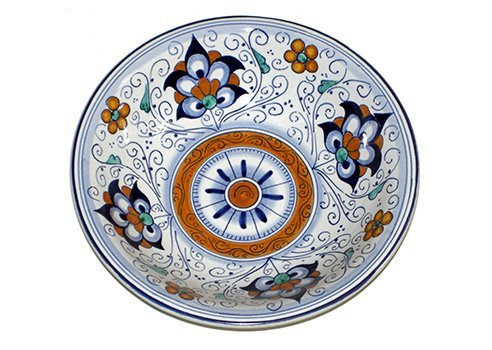Reading time: Less than 1 minute
Increase your vocabulary and you’ll make your writing much more precise. That’s why I provide a word of the week. Today’s word: faience.
When I read Ian McEwan’s wonderful new novel, Sweet Tooth, I encountered a word I’d never seen before: faience. Here is the sentence in which it appeared:
“I remember everything – the scrubbed pine table with dented egs of faded duck-egg blue, the wide faience bowl of slippery ceps….”
Faience, it turns out, is the English name for tin-glazed pottery, on an earthenware body, originally associated with the town of Faenza in northern Italy. As soon as I saw the photo (shown above) I knew exactly what the word meant. (The term is now also used to describe glazed earthenware made in ancient Egypt, where it was used for beads, amulets, jewelry, and small figures.)
Interestingly, the noun, which dates back to 1714 originates with the French word faïence which probably came from Fayence, the French name of Faenza. If you go really crazy tracing the etymology, you’ll learn that the city name comes from the Latin faventia, which means “silence, meditation,” perhaps referring to the tranquil setting of the town.
Finally, if you didn’t recognize the word ceps, which occurred at the very end of the Ian McEwan sentence, it refers to a certain type of wild mushroom found in France.


